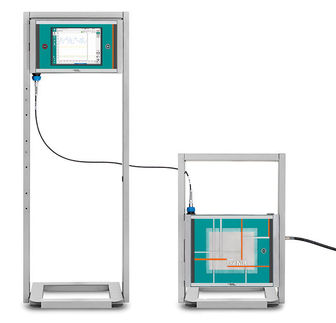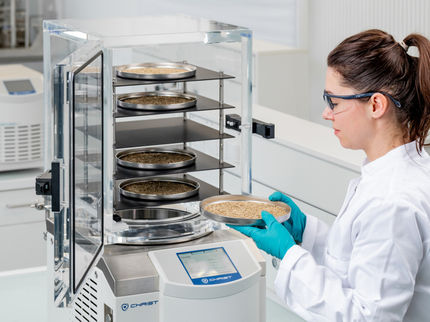An oncogene is a modified gene, or a set of nucleotides that codes for a protein and is believed to cause cancer. Genetic mutations resulting in the activation of oncogenes increase the chance that a normal cell will develop into a tumor cell. Since the 1970s, dozens of oncogenes have been identified in human cancer. Oncogenes are figuratively thought to be in a perpetual tug-of-war with tumor suppressor genes which act to prevent DNA damage and keep the cell's activities under control. There is much evidence to support the notion that loss of tumor suppressors or gain of oncogenes can lead to cancer.[1]
Proto-oncogene
A proto-oncogene is a normal gene that can become an oncogene due to mutations or increased expression. Proto-oncogenes code for proteins that help to regulate cell growth and differentiation. Proto-oncogenes are often involved in signal transduction and execution of mitogenic signals, usually through their protein products. Upon activation, a proto-oncogene (or its product) becomes a tumor inducing agent, an oncogene.[2] Examples of proto-oncogenes include SRC, RAS, WNT, MYC, ERK and TRK.
Activation
The proto-oncogene can become an oncogene by a relatively small modification of its original function. There are three basic activation types:
- A mutation within a proto-oncogene can cause a change in the protein structure, causing
- An increase in protein concentration, caused by
- an increase of protein expression (through misregulation)
- an increase of protein stability, prolonging its existence and thus its activity in the cell
- a gene duplication (one type of chromosome abnormality), resulting in an increased amount of protein in the cell
- A chromosomal translocation (another type of chromosome abnormality), causing
- an increased gene expression in the wrong cell type or at wrong times
- the expression of a constitutively active hybrid protein. This type of aberration in a dividing stem cell in the bone marrow leads to adult leukemia
Mutations in microRNAs can lead to activation of oncogenes.[3] New research indicates that small RNAs 21-25 nucleotides in length called microRNAs (miRNAs) can control expression of these genes by downregulating them.[4]
Oncogene
There are several systems for classifying oncogenes,[5][6] but there is not yet a widely accepted standard. They are sometimes grouped both spatially (moving from outside the cell inwards) and chronologically (parallelling the "normal" process of signal transduction). There are several categories that are commonly used:
| Category | Examples | Description
|
| Growth factors, or mitogens | c-Sis | Are usually secreted by a few specialized cells to induce cell proliferation in paracrine, autocrine, or endocrine manner. If a cell that usually does not produce growth factors suddenly starts to do so (because it developed an oncogene), it will thereby induce its own uncontrolled proliferation (autocrine loop), as well as the proliferation of neighboring cells. In addition, abnormal growth of endocrine glands often cause ectopic production of growth hormones that have secondary effects on other parts of the body.
|
| Receptor tyrosine kinases | epidermal growth factor receptor (EGFR), platelet-derived growth factor receptor (PDGFR), and vascular endothelial growth factor receptor (VEGFR), HER2/neu | Become constitutively (permanently) active
|
| Cytoplasmic tyrosine kinases | Src-family, Syk-ZAP-70 family, and BTK family of tyrosine kinases, the Abl gene in CML - Philadelphia_chromosome | -
|
| Cytoplasmic Serine/threonine kinases and their regulatory subunits | Raf kinase, and cyclin-dependent kinases (through overexpression). | -
|
| Regulatory GTPases | Ras protein | -
|
| Transcription factors | myc gene | -
|
History
The first oncogene was discovered in 1970 and was termed src (pronounced SARK). Src was in fact first discovered as an oncogene in a chicken retrovirus. Experiments performed by Dr G. Steve Martin of the University of California, Berkeley demonstrated that the SRC was indeed the oncogene of the virus.
In 1976 Drs. J. Michael Bishop and Harold E. Varmus of the University of California, San Francisco demonstrated that oncogenes were defective proto-oncogenes, found in many organisms including humans. For this discovery Bishop and Varmus were awarded the Nobel Prize in 1989.
See also
References
- ^ Yokota J (2000 Mar). ""Tumor progression and metastasis"". Carcinogenesis. 21 (3): 497-503.
- ^ Todd R, Wong DT (1999). ""Oncogenes"". Anticancer Res. 19 (6A): 4729-46.
- ^ Esquela-Kerscher, A; Slack FJ (Apr 2006). "Oncomirs - microRNAs with a role in cancer". Nature Reviews Cancer 6 (4): 259-269.
- ^ Negrini, M; Ferracin M, Sabbioni S, Croce CM (Jun 2007). "MicroRNAs in human cancer: from research to therapy". Journal of Cell Science 120 (11): 1833-1840.
- ^ http://web.indstate.edu/thcme/mwking/oncogene.html#classes
- ^ http://www.qub.ac.uk/cm/pat/education/Carcinogenesis/tsld014.htm
| Pathology: Cancer, Tumors, neoplasia, and oncology (C00-D48, 140-239) |
|---|
| Benign tumors | Hyperplasia - Cyst - Pseudocyst - Hamartoma - Benign tumor |
|---|
| Malignant progression | Dysplasia - Carcinoma in situ - Cancer - Metastasis |
|---|
| Topography | lip, oral cavity and pharynx: Oral - Head/Neck - Nasopharyngeal
digestive system: tract (Esophagus, Stomach, Small intestine, Colon/rectum, Appendix, Anus) - glands (Liver, Bile duct, Gallbladder, Pancreas)
respiratory system: Larynx - Lung
bone, articular cartilage, skin, and connective tissue: Bone - Skin - Blood
urogenital: breast and female genital organs (Breast, Vagina, Cervix, Uterus, Endometrium, Ovaries) - male genital organs (Penis, Prostate, Testicles) - urinary organs (Kidney, Bladder)
nervous system: Eye - Brain
endocrine system: Thyroid (Papillary, Follicular, Medullary, Anaplastic) - Adrenal tumor (Adrenocortical carcinoma, Pheochromocytoma) - Pituitary |
|---|
| Misc. | Tumor suppressor genes/oncogenes - Staging/grading - Carcinogenesis - Carcinogen - Research - Paraneoplastic syndrome - List of oncology-related terms |
|---|
|







